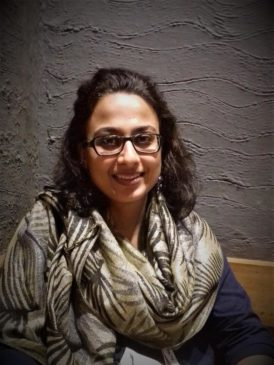
(Image Courtesy: Facebook)
“Respect art and artists to take forward art licensing in India,” says Jasmine Shah Varma, Indian art curator, and founder of Indian Colours, who believes India has a growing and diverse art scenario.
In an exclusive interview with the Licensing Corner, Jasmine talks about curating and the current art scenario in India.
From a former journalist to the founder of the Indian colours, describe your journey so far.
I specialized in writing about contemporary Indian art for mainstream newspapers which was the start of my long association with artists. Thereafter my engagement with fine arts continued as curator of art exhibitions for private art galleries. In the course of curating for a few years I experienced that a minuscule portion of the city’s population visited art galleries. While the country’s art making profession is growing, the majority of people are not familiar with the language of contemporary art. I started looking at ways of bridging that gap and making art approachable and to start a relationship between people and contemporary art language. That’s how I decided to adapt works of art to products of lifestyle use and make them available everywhere beyond the scope of art galleries. This started as an experiment to see if people responded to art products of everyday use and they did.
For most of the people, an art curator is an agent. Explain to us how exactly an art curator contextualize artwork?
In the context of contemporary art, the role of a curator is a specialized one. She brings a studied perspective on a subject of concern and selects artworks related to such a concern. A curator researches, visits artist studios, studies various art practices past and present, interprets artworks, writes about it for the public, designs the display of the artworks among other responsibilities.
Licensing, to most of us, is not a discussed topic. What, according to you, is art licensing? Who should license their work?
Like all licensing art licensing is an arrangement where the artists give permission to another party to print images of their paintings and manufacture products against agreed payment. The copyright of an artist’s creation always remains with the artist so to use the images of their art one has to license them to print.
Art licensing is not a well-known area in India, what problems you faced while working with Indian artists and licensing their work?
I work with established and well-known artists. Fortunately for me, they all have been very forthcoming. They see the need for an initiative like Indian Colours in India.
Buying art is still a practice among the elite class, how have you sought to dismiss this notion and make art more accessible?
Indian Colours is an initiative to dismiss the notion that art is only for certain sections of society. With our range of art products anyone can own a piece of art and use in their day to day life. An original work of art is one-off and will always remain expensive because each creation takes a lot of time and experience to make. So Indian Colours in collaboration with esteemed artists is making each masterpiece available at the smallest fraction of the original cost of an artwork.
Could you please elaborate a bit about the website ‘Indian Colours’? Like from distribution partners to potential customers.
Our products are sold on www.indiancolours.com and select marketplaces. We supply to boutiques and lifestyles stores across the country. We cater to customized bulk orders from individuals and corporate who may want it for gifting etc.
What are the things you look for while selecting for a potential licensor?
Firstly, the artists I work with are established in their art practice. Adapting art to products has challenges as it is not made for printing on 3D objects but as a work of art for walls. This is unlike designs you see on products in the market. Keeping this in mind adaptable artworks are chosen. Lastly, the aesthetics of the kind of art is my choice contributing to the visual identity of the brand.
What is the business model between you and the artist?
Royalty based.
As being one of the pioneers in the field of art licensing, what should one keep in mind while licensing an artwork?
Respect art and artists to take forward such an initiative.
Briefly explain the current art scenario in India. What works or what does not?
India has a growing art scene. It is diverse and very exciting. Much more needs doing so that more Indians engage with fine art in places besides the metros.
Indian Colours worked with several esteemed artists such as Anjana Mehra, Babu Xavier, Brinda Miler. How has the experience been so far? Any plans to give opportunity to fresh talents?
I am privileged to have the association with artists and the collaborative process has been enjoyable for both parties. Our list of artists is always evolving.
Any new projects in the pipeline? Tell us about your upcoming initiatives.
Yes, we have plans for new products and associations. It’s all in the works.
Jasmine is a Mumbai-based art curator and writer. She has been writing extensively on art since 1998 for mainstream publications, art magazines and artist catalogues. Since 2005 she has curated several exhibitions that have both drawn a new audience to the visual arts as well as attracted the attention on seasoned collectors.



